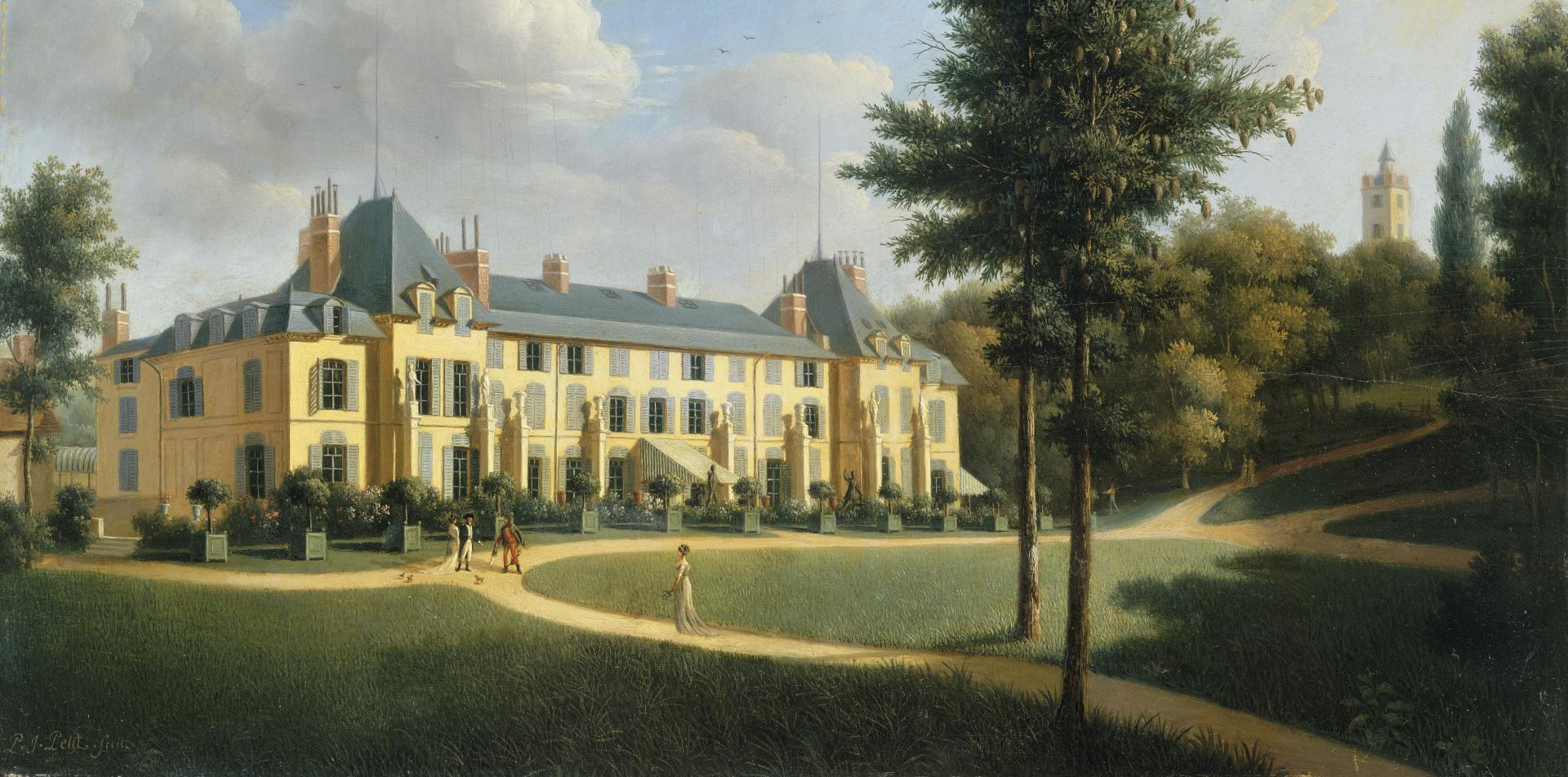The origin of the name "Malmaison" is thought to be linked to the existence of a hideout used by Norman invaders as their base for carrying out raids in the surrounding area. This "Mala domus" (evil house) appeared in texts for the first time in 1244, and a manor house is referred to in the 14th century under the name of La Malmaison.
In 1390 the land was bought by Guillaume Goudet, Sergeant-at-Arms for Charles VI, and remained in his lineage under the Dauvergne, Perrot and Barentin families until 1763. As of 1737, the château was rented by rich financiers who entertained a select elite.
In 1763, the land passed to the son of the Chancellor d'Aguesseau, then in 1771 it passed into the hands of Jacques-Jean Le Couteulx du Molay, a rich banker of the kingdom. Madame du Molay held a literary salon at the château, where she entertained the Abbé Delille, Madame Vigée-Lebrun, Grimm and Bernardin de Saint-Pierre.
The Revolution led them to part with Malmaison, which they sold to Joséphine Bonaparte on 21 April 1799 for the sum of 325,000 francs. This purchase was approved by Bonaparte on his return from Egypt and he became the true owner of the estate. From 1800 to 1802 this small château became the seat of the French government, together with the Tuileries, and frequently played host to meetings of the ministers of the Consulate.
In the autumn of 1802 the Consul and his family moved to Saint-Cloud and Joséphine made frequent trips to the “Imperial Palace of Malmaison” in order to renovate and extend the estate. After the divorce in 1809, the Emperor gave her the property together with its collections, and it was there that she died on 29 May 1814. Her son, Prince Eugène, inherited the property but his widow sold Malmaison to the Swedish banker Jonas Hagerman in 1828.
In 1842, Queen Christine of Spain, the widow of King Ferdinand VII, acquired the château to use as her place of residence before selling it back to Napoleon III, Joséphine’s grandson, in 1861. Damaged by fighting during the War of 1870, then by the installation of barracks in the château, the estate was sold by the State in 1877 to a goods merchant who gradually sold off parcels of land from the park. In 1896, the patron and philanthropist Daniel Iffla, known as Osiris, purchased the château along with its park, by then reduced to 6 hectares, and donated it to the State in 1903. A museum was opened on the estate in 1905.

